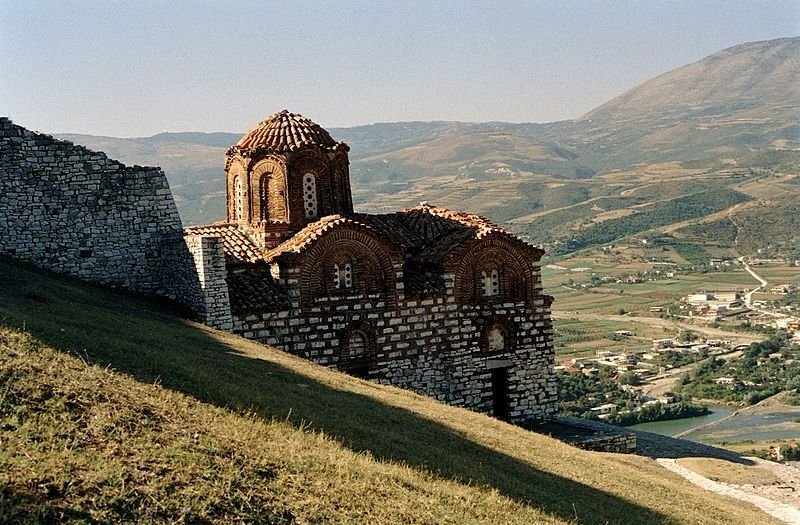 Berat, Albania
Berat, AlbaniaSource: https://commons.wikimedia.org/wiki/File:Berat_Albania_bridge.jpg
Author: Jason Rogers

Berat is a city in south-central Albania. It is the capital of the District of Berat and the County of Berat. The city has a population of 126,000 (2011 estimate). It is located at an elevation of 58 m (190 ft). The city is in the Central European Time, which is an hour ahead of Coordinated Universal Time (UTC+1) and two hours ahead during Daylight Saving Time in summer.
The name Berat is derived from Belgrad, meaning "white city", similar in meaning to Belgrade. It is located on the right bank of the river Osum, before it joins the river Molisht.
Berat is a city with many buildings of historical significance. Its old town of Berat was inscribed as a World Heritage Site in 2008 along with the old town of Gjirokastra.
 Church of the Holy Trinity, on the grounds of Berat Castle
Church of the Holy Trinity, on the grounds of Berat CastleSource: https://commons.wikimedia.org/wiki/File:Berat_Albania_7.jpg
Author: Diego Galli

As would be expected, the history of Berat goes back thousands of years. The earliest documentation appears in the 6th century BC, when it was settled by a Greek tribe. In 200 BC, the city was captured by the Roman legatus Lucius Apustius.
When the Roman Empire collapse, Berat became part of the Byzantine Empire, as with the rest of the Balkan peninsula. It was captured by Bulgarians under Presian I in the 9th century. That was when it was renamed Beligrad.
Berat fell to the Ottomans in 1417. Although Albanian forces tried to get it back, they did not manage to recapture it. By the modern era, Berat became one of the most important Albanian cities in the Ottoman Empire. Since the 18th century, the city has some twenty-two guilds ranging from metalworks to silversmithing and silk making.
Visiting Berat
You can reach Berat by taking a bus or minibus (called furgon) from Tirana.Places of Interest in Berat
- Berat Ethnographic Museum
- Kala Castle
- Onufri Iconography Museum

Copyright © 2003-2025 Timothy Tye. All Rights Reserved.

 Go Back
Go Back